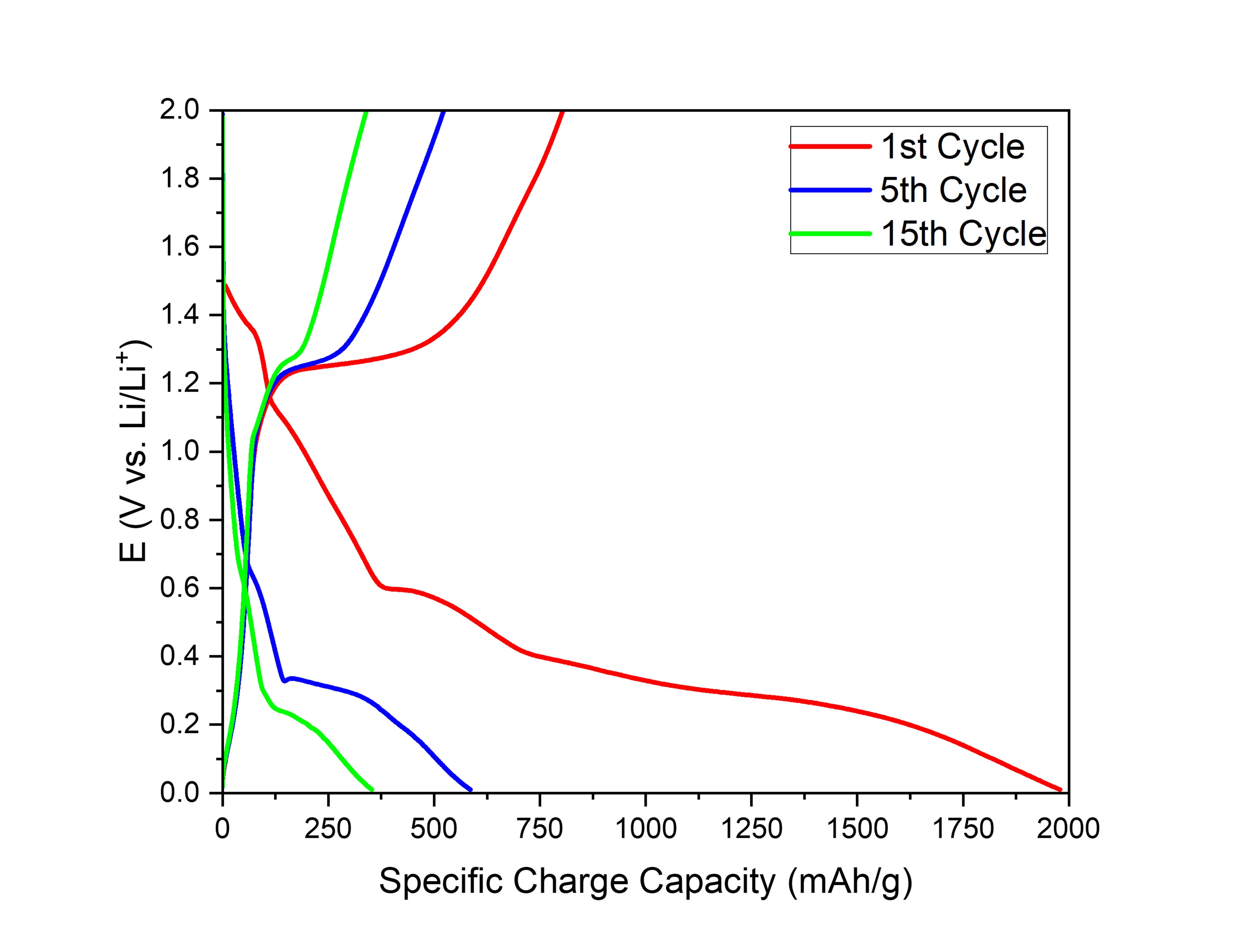2024 AIChE Annual Meeting
Investigating Red Phosphorous and Liquid Metal As Next Generation Active Materials for Monovalent Cation Energy Storage
The demand for energy storage in applications such as electric vehicles, consumer electronics and grid storage is ever increasing. Lithium-ion batteries (LIBs) are currently the state-of-art in electrochemical energy storage and are extensively used in electric vehicles (EV’s) and consumer electronics. The annual EV Li-ion battery demand for sustainable development is projected to grow to up to .7 TWh per year by 2030, a 7x increase compared to the current demand projection of .1 TWh per year for 2025.1 In order to meet this energy demand, we propose to use EGaIn, a eutectic alloy of gallium and indium that is liquid at room temperature, as a “self-healing” agent for red phosphorous in anodes to achieve longer cycle lives and higher capacities. Red phosphorous (RP) has been the subject of extensive research due to its relatively low cost compared to other commonly used anode materials in LIB’s, stability in air, low toxicity, and extremely high theoretical capacity for Li+ ions at 2596 mAh g-1. Graphite, a currently commercially used anode material, has roughly a 7x lower capacity of 372 mAh g-1 compared to RP for Li+ ions. RP’s main drawback is that it has a volume expansion of up to 300% during charging. This can cause delamination of the RP from the anode, resulting in capacity fade due to the RP becoming electrically disconnected from the anode.2 To mitigate this delamination, we propose to use EGaIn to maintain electrical contact with delaminated red P particles and fill in defects formed from red P’s large volume expansion. EGaIn has been used as a “self-healing” agent for silicon, another high-capacity anode material in LIB’s, that also suffers from high volume expansion.3 In our work, we fabricate a composite film electrode comprising EGaIn and RP nanoparticles in a carbon polymer matrix. We perform material characterization of the electrode before and after electrochemical characterization of the electrode in a Li half-cell. This strategy of using EGaIn in combination with RP may help develop effective approaches for the integration of other high volume expansion active materials in anodes.
- IEA (2021), Global EV Outlook 2021, IEA, Paris https://www.iea.org/reports/global-ev-outlook-2021, Licence: CC BY 4.0
- Zhou, J. et al. Phosphorus-Based Composites as Anode Materials for Advanced Alkali Metal Ion Batteries. Adv. Funct. Mater. 30, 2004648 (2020).
- Yang, J. et al. Self-Healing Silicon Anode via the Addition of GaInSn-Encapsulated Microcapsules. ACS Appl. Energy Mater. 5, 12945–12952 (2022).

